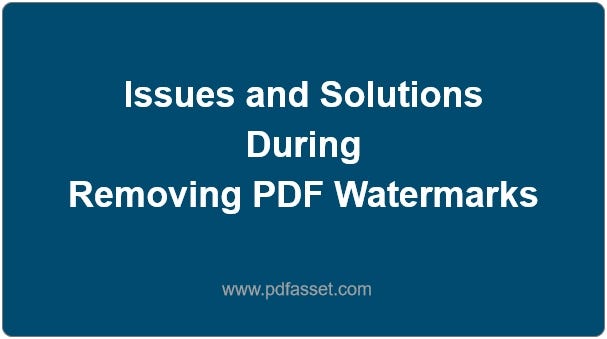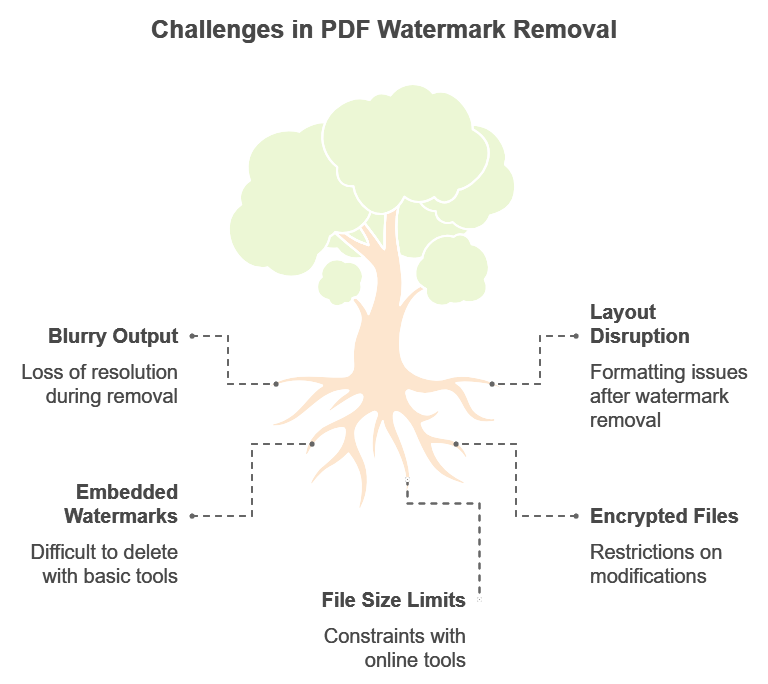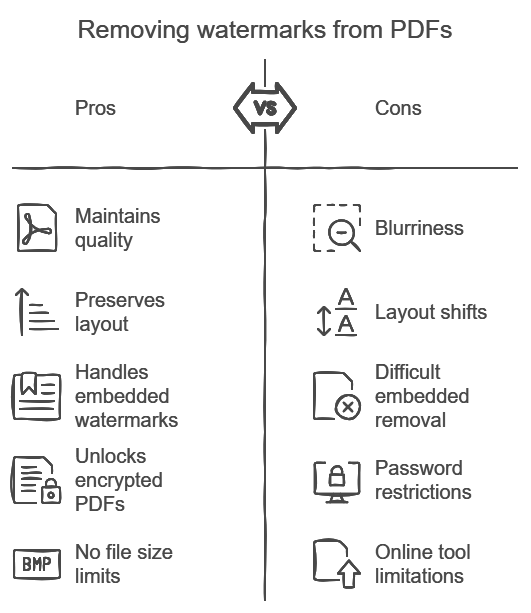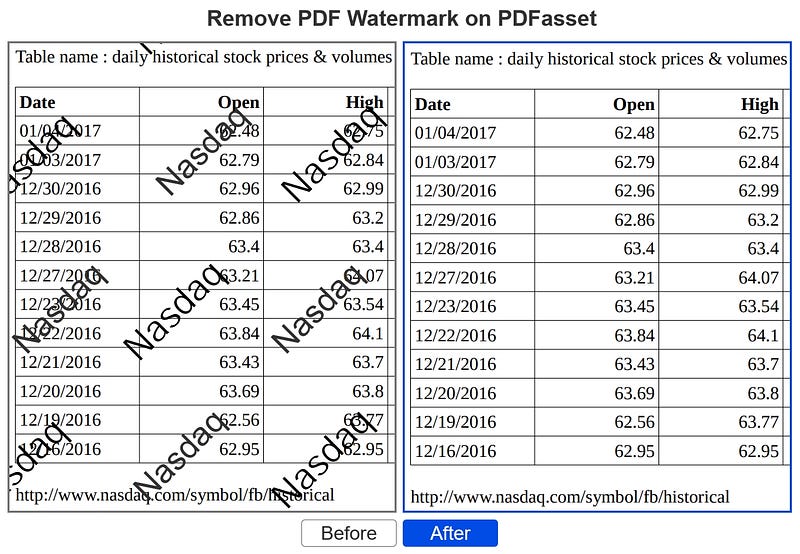
Menghapus watermark dari file PDF adalah kebutuhan umum untuk dokumen bisnis, makalah akademis, dan file pribadi. Namun, seringkali timbul tantangan selama proses penghapusan watermark PDF, yang dapat memengaruhi kualitas dan kemudahan membaca dokumen. Berikut adalah beberapa masalah umum dan solusi untuk membantu memastikan pengalaman yang lancar saat Anda menghapus watermark dari file PDF.

1. Gambar PDF yang Buram atau Berkualitas Rendah Setelah Penghapusan Watermark
Masalah: Banyak pengguna menemukan bahwa setelah menghapus watermark, PDF menjadi buram, terutama untuk file dengan gambar atau grafik kompleks. Hal ini sering disebabkan oleh hilangnya resolusi selama proses penghapusan watermark PDF.
Solusi: Untuk memastikan dokumen tetap jelas, disarankan untuk menggunakan alat profesional seperti Editor PDF Foxit atau Adobe Acrobat Pro. Alat-alat ini dapat membantu Anda menghapus watermark sambil mempertahankan kualitas dan resolusi asli. PDFasset, sebuah opsi online, juga menyediakan penghapusan watermark PDF gratis secara online yang berkualitas tinggi, yang dapat menyelesaikan tugas tanpa mengorbankan kejelasan dokumen.
2. Masalah Tata Letak dan Format Setelah Penghapusan Watermark
Masalah: Kadang-kadang, menghapus watermark dapat mengganggu tata letak, terutama dalam PDF multi-halaman atau berformat berat. Hal ini dapat menyebabkan pergeseran teks atau gambar berpindah dari posisi aslinya.
Solusi: Untuk menghindari hal ini, selalu simpan salinan cadangan file Anda sebelum mencoba melakukan pengeditan. Alat seperti Editor PDF Foxit menawarkan pengenalan cerdas, memastikan tata letak tetap terjaga saat Anda menghapus watermark. Menggunakan alat online PDFasset juga memungkinkan Anda mempertahankan tata letak asli, meminimalkan risiko masalah format.
3. Tanda Air Tersemat yang Tidak Dapat Dihapus
Isu: Beberapa watermark tertanam dalam metadata dari sebuah PDF, sehingga sulit untuk dihapus dengan menggunakan alat-alat dasar.
Solusi: Untuk watermark yang tertanam, alat canggih seperti Adobe Acrobat Pro atau Foxit PDF Editor ideal, karena mereka dapat mengenali dan menghapus elemen-elemen yang lebih dalam ini. Jika watermark ini tetap ada, pendekatan lain adalah dengan mengonversi PDF ke format lain (seperti Word atau gambar), menghapus watermark secara manual, dan kemudian mengonversinya kembali ke PDF.

4. PDF Terenkripsi yang Tidak Memungkinkan Penghapusan Tanda Air
Masalah: Beberapa file PDF dilindungi kata sandi atau dienkripsi, membatasi modifikasi apa pun, termasuk penghapusan watermark.
Solusi: Untuk file PDF yang terenkripsi, buka kunci file dengan memasukkan kata sandi sebelum mencoba menghapus watermark. Jika kata sandi tidak tersedia, mungkin perlu menghubungi pemilik dokumen untuk izin. Beberapa alat online tertentu, seperti PDFasset, memungkinkan pengguna membuka kunci dan menghapus watermark setelah izin diberikan.
5. Batasan Ukuran File untuk Alat Online
Masalah: Banyak alat online memberlakukan batasan ukuran file, sehingga sulit untuk menghapus watermark dari file PDF besar.
Solusi: Jika ukuran file menjadi masalah, coba bagi PDF menjadi bagian-bagian lebih kecil dan kemudian hapus watermark secara individual. Atau, perangkat lunak desktop seperti Editor PDF Foxit tidak memiliki batasan ukuran file, sehingga ideal untuk menangani file PDF besar.

Kesimpulan
Menghapus watermark dari file PDF dapat meningkatkan keterbacaan dan penampilan dokumen, tetapi pengguna sering mengalami masalah seperti kabur, pergeseran tata letak, dan kesulitan dengan watermark yang tertanam. Memilih alat yang tepat sangat penting. Editor PDF Foxit dan PDFasset menawarkan solusi yang efektif yang memastikan kualitas dokumen tetap terjaga. Untuk lebih banyak alat pengolahan PDF, kunjungi halaman alat PDFasset untuk mengeksplorasi opsi tambahan untuk manajemen PDF yang efisien.

















 Harga
Harga

 1915
1915












